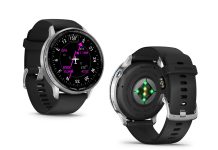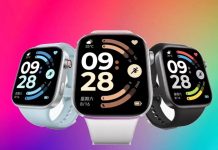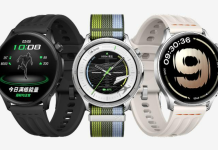When evaluating premium fitness tracker options, two names consistently dominate conversations: the Oura Ring 4 and the Apple Watch Series. While both are designed to deliver robust health metrics, their form, focus, and user experiences diverge significantly.

This comprehensive analysis of Oura vs Apple Watch will help users understand which device suits their goals—whether it’s for tracking workouts, monitoring sleep, managing stress, or enhancing daily readiness.
Design and Wearability
Oura Ring 4
-
Form: Titanium smart ring weighing 4–6 grams
-
Design: Minimalist with no screen; available in polished silver, black, stealth, or gold
-
Durability: Water-resistant up to 100 meters
-
Discretion: Ideal for those who dislike wrist wearables
Apple Watch
-
Form: Smartwatch with touchscreen display; 32–39 grams
-
Design: Customizable watch faces, digital crown, and interchangeable bands
-
Durability: Water-resistant up to 50 meters
-
Functionality: Doubles as a mini smartphone on the wrist
Verdict: Oura wins in minimalism and discretion, while the Apple Watch excels in interactivity and display customization.
Fitness Tracking Capabilities
Apple Watch
-
Tracks a wide range of exercises: running, swimming, cycling, HIIT, yoga, and more
-
Includes real-time heart rate monitoring, GPS mapping, and pace/speed data
-
Syncs with Apple Fitness+ for guided workouts
-
Offers goal-based Activity Rings (Move, Exercise, Stand)
Oura Ring 4
-
Tracks general activity levels, step count, and calorie burn
-
No built-in GPS or exercise-specific tracking
-
Focuses on recovery readiness and daily strain rather than performance metrics
-
Encourages movement balance to avoid overtraining
Verdict: Apple Watch is the better fitness tracker for workout enthusiasts and athletes. Oura prioritizes holistic recovery and background activity.
Sleep Monitoring Accuracy
One of Oura’s strongest selling points is its advanced sleep monitoring, which many studies and users find superior to wrist-based wearables.
Oura Ring 4
-
Offers highly accurate sleep staging (REM, light, deep)
-
Detects disturbances, latency, and overall quality
-
Provides a Sleep Score and detailed trend analysis
-
Incorporates nighttime heart rate, temperature, and movement into sleep reports
Apple Watch
-
Monitors sleep duration and general quality via motion and heart rate
-
Offers a basic sleep graph with some trends
-
Integrates with third-party sleep apps for enhanced analysis
-
Lacks core temperature and HRV monitoring during sleep
Verdict: Oura is the more precise sleep monitor, with clinical-grade data and user-friendly insights. Apple Watch delivers surface-level sleep metrics unless paired with third-party tools.
Oura Ring 4
-
Calculates a Readiness Score based on HRV, resting heart rate, body temperature, and sleep
-
Highlights overtraining risk or illness early
-
Recommends activity level based on physiological status
Apple Watch
-
Tracks resting heart rate and heart rate variability
-
Offers no central readiness score
-
Relies on data aggregation in the Health app without prescriptive guidance
Verdict: Oura excels in daily readiness tracking, making it ideal for users focused on recovery, stress, and long-term health trends.
Battery Life Comparison
| Device | Battery Life | Charging Time |
|---|---|---|
| Oura Ring 4 | 4–7 days | 80 minutes |
| Apple Watch | 18–36 hours | ~75 minutes (fast charge supported) |
Oura clearly leads in battery longevity, thanks to its screenless design and efficiency. The Apple Watch, due to its display and active functions, requires near-daily charging.
Health Insights and Software
Apple Watch
-
ECG, blood oxygen (SpO2), noise monitoring, fall detection
-
Cycle tracking and medication reminders
-
Fitness+ integration and smart notifications
-
Works best with Apple ecosystem (iPhone, iCloud, Siri)
Oura Ring
-
Sleep, readiness, recovery, SpO2, and skin temperature
-
Accurate period and fertility tracking
-
Stress detection and guided breathing sessions
-
Minimal notifications to reduce distraction
Verdict: Apple Watch functions like a miniature health command center. Oura leans toward passive, unobtrusive health monitoring.
Price and Membership Structure
| Feature | Oura Ring 4 | Apple Watch Series 9 |
|---|---|---|
| Device Cost | ~$299 USD | ~$399–$799 USD |
| Subscription | $5.99/month for full insights | None (unless using Fitness+) |
| Value for Money | High for wellness users | High for ecosystem users |
Oura offers deep wellness data for a lower upfront cost, but charges monthly. Apple Watch is a larger investment, particularly for non-iPhone users, but avoids recurring fees.
Oura vs Apple Watch
| Category | Best Choice |
|---|---|
| Fitness Tracking | Apple Watch |
| Sleep Monitoring | Oura Ring 4 |
| Daily Recovery & Readiness | Oura Ring 4 |
| Health Features | Apple Watch |
| Battery Life | Oura Ring 4 |
| Design & Comfort | Oura Ring 4 |
| App Ecosystem | Apple Watch |
Choosing the Right Wearable
The decision between Oura vs Apple Watch depends entirely on your goals:
-
Choose Oura Ring 4 if you value long-term recovery, discreet wear, superior sleep insights, and minimalist design.
-
Choose Apple Watch if you prioritize daily fitness tracking, health notifications, app integration, and multifunctionality.
Both devices lead their categories in sleep monitor and fitness tracker performance. Ultimately, they serve different lifestyles—Oura is your wellness whisperer, while the Apple Watch is your digital assistant.




